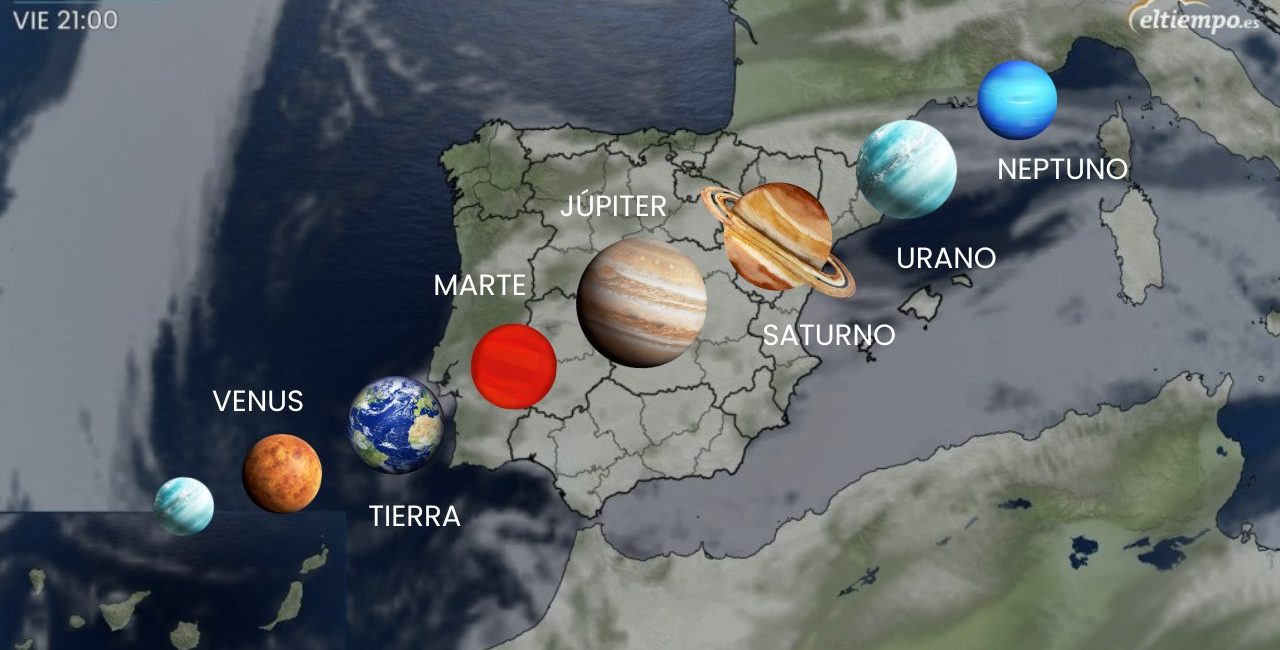Tonight, February 28th, 2025, the night sky will provide an unparalleled astronomical experience: a planetary alignment that will bring the Solar System’s seven planets together. An astronomical phenomenon that is “unique” and won’t happen again until 2040. Five of these will be observable with the unaided eye.
From Spain, the planetary alignment will be well visible. The condition of the sky will be the only issue. Since a storm will bring cloud cover to a large portion of the map, the weather will affect how visible the phenomena is from our nation.
Where can Spain get the best views of the aligned planets? Forecasts indicate that because of the reduced cloud cover, the south and west of Galicia, as well as the coastal regions of the Basque Country, Asturias, and Cantabria, will be the ideal places to watch this phenomenon.
How can I see the planets that will be aligned?
Mercury, Venus, Mars, Jupiter, Saturn, Uranus, and Neptune will all be in the lineup.
Without a telescope, the first five will be visible:
Mercury: Since it will be so low on the horizon, it will be challenging to observe.
Even in places with light pollution, Venus is the brightest planet.
Mars: Its distinctive reddish hue will make it stand out.
Jupiter: Brightness-wise, second only to Venus.
Saturn: Even though it will be the faintest, optical devices can still see it.
To view Uranus and Neptune, you’ll need a telescope or astronomical binoculars.
It is crucial to locate an area free of light pollution and give your eyes at least half an hour to adjust to the darkness in order to fully enjoy this event.
When will Spain be able to see the planetary alignment?
On Saturday March 1st, well before sunrise, between 5:00 and 7:00 a.m., is the ideal time to see the planetary alignment.
At 7:50 p.m., Saturn will vanish from the sky.
It will be 8:22 p.m. when Mercury sets.
At 8:34 p.m., Neptune will set.
Up to 9:52 p.m., Venus will be visible.
It will be 01:21 when Uranus sets.
At 02:55, Jupiter will vanish from view.
At 5:47 p.m., Mars will be the last planet to set.
It is advised to use programs like SkyMap, Stellarium, or SkySafari and to look towards the east-southeast horizon in order to locate the planets in the sky.
Sky conditions on the evening of February 28th
The peninsula and the Balearic Islands are expected to have a lot of cloud cover, according to weather forecasts, which may make it challenging to see the event in many places. However, Asturias, Cantabria, the Basque Country’s coast, and the south and west of Galicia are predicted to have the clearest sky.
There will be periods of cloud cover on the Canary Islands, which may impair visibility.
Until 2040, a singular astronomical phenomena
It is uncommon for planets to align with so many heavenly bodies. Since a similar event won’t happen again until 2040, this is a once-in-a-lifetime chance to witness an unparalleled celestial display.
If the weather permits, the early hours of Saturday March 1st will be ideal for admiring the sky and the universe.









No Comment! Be the first one.